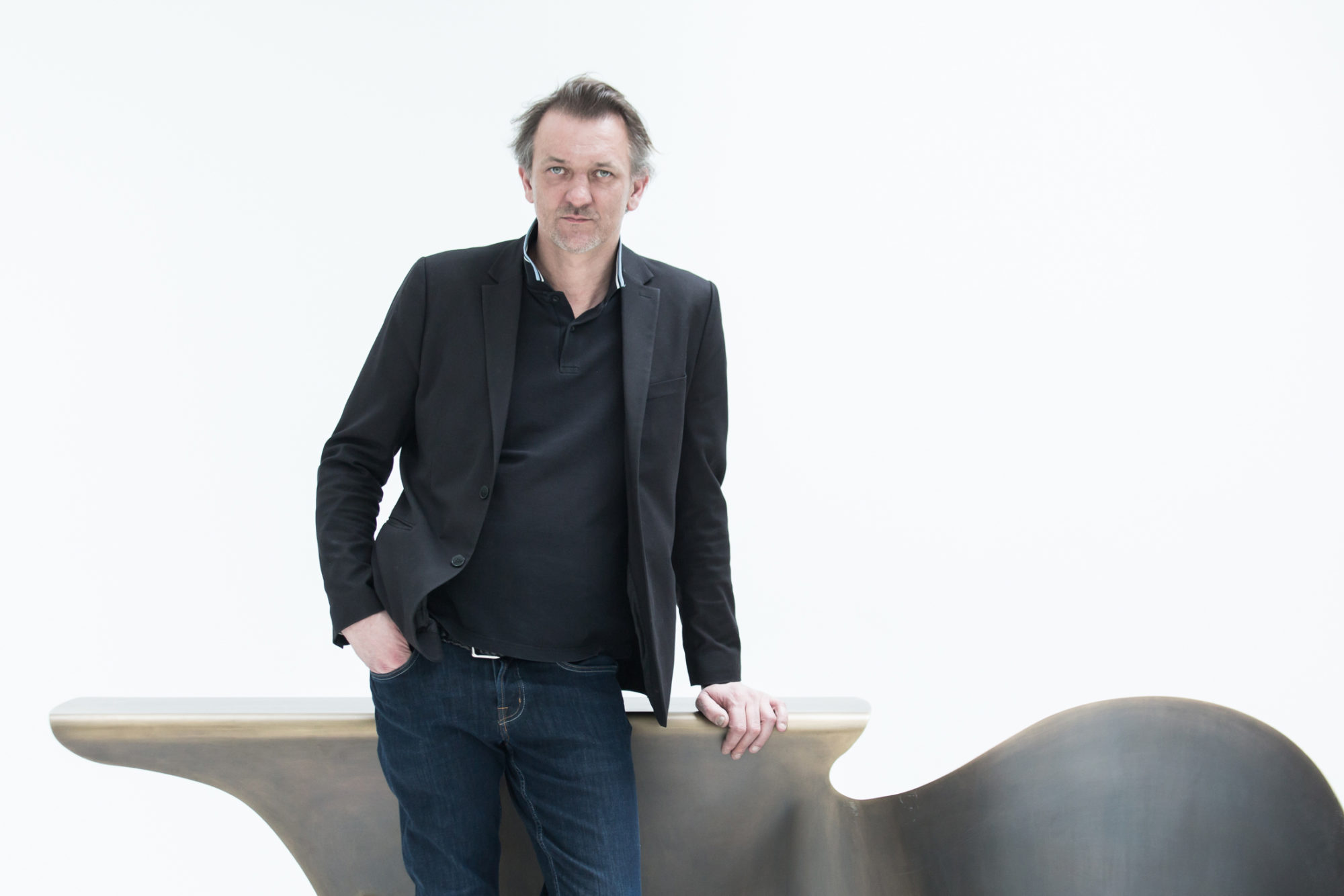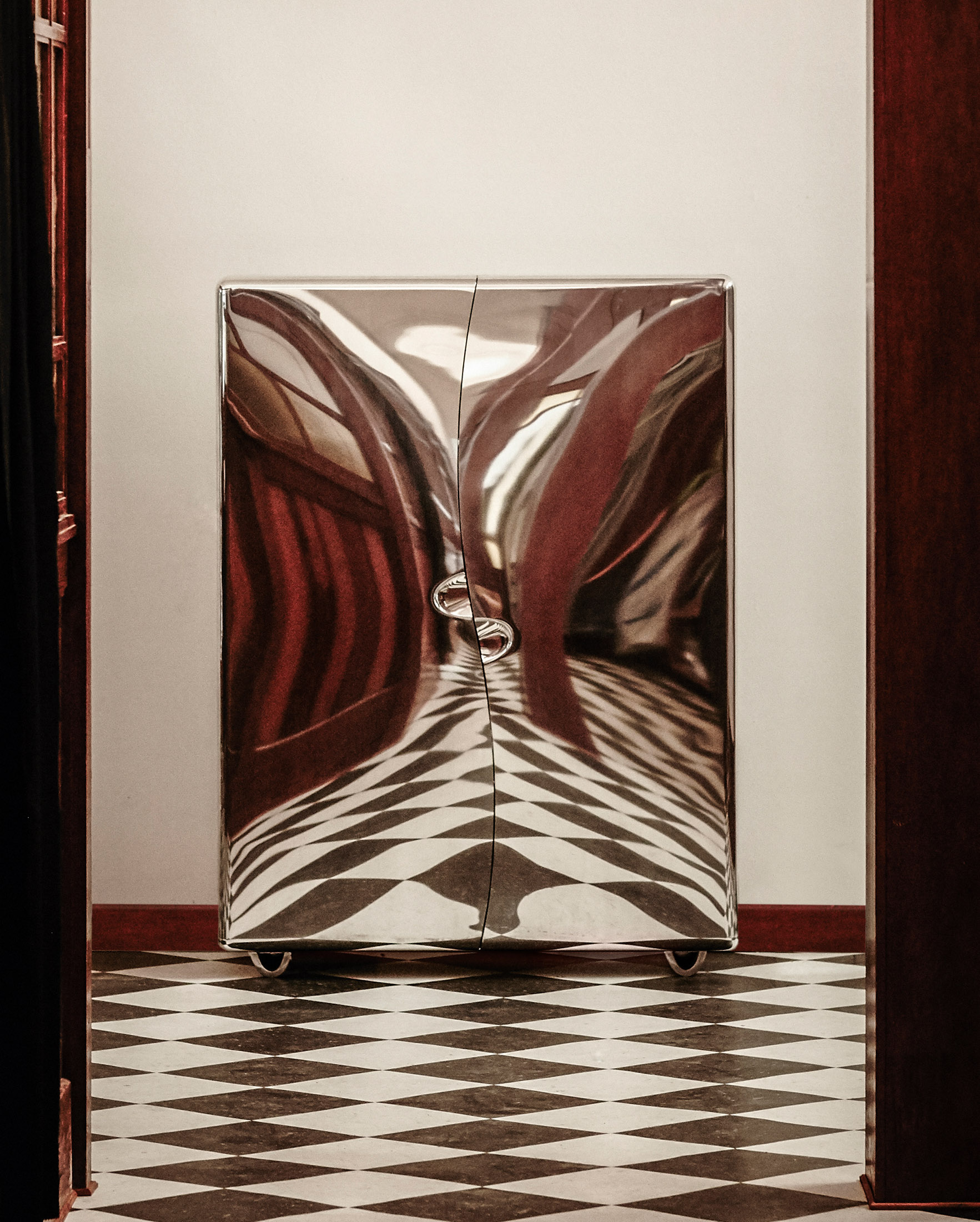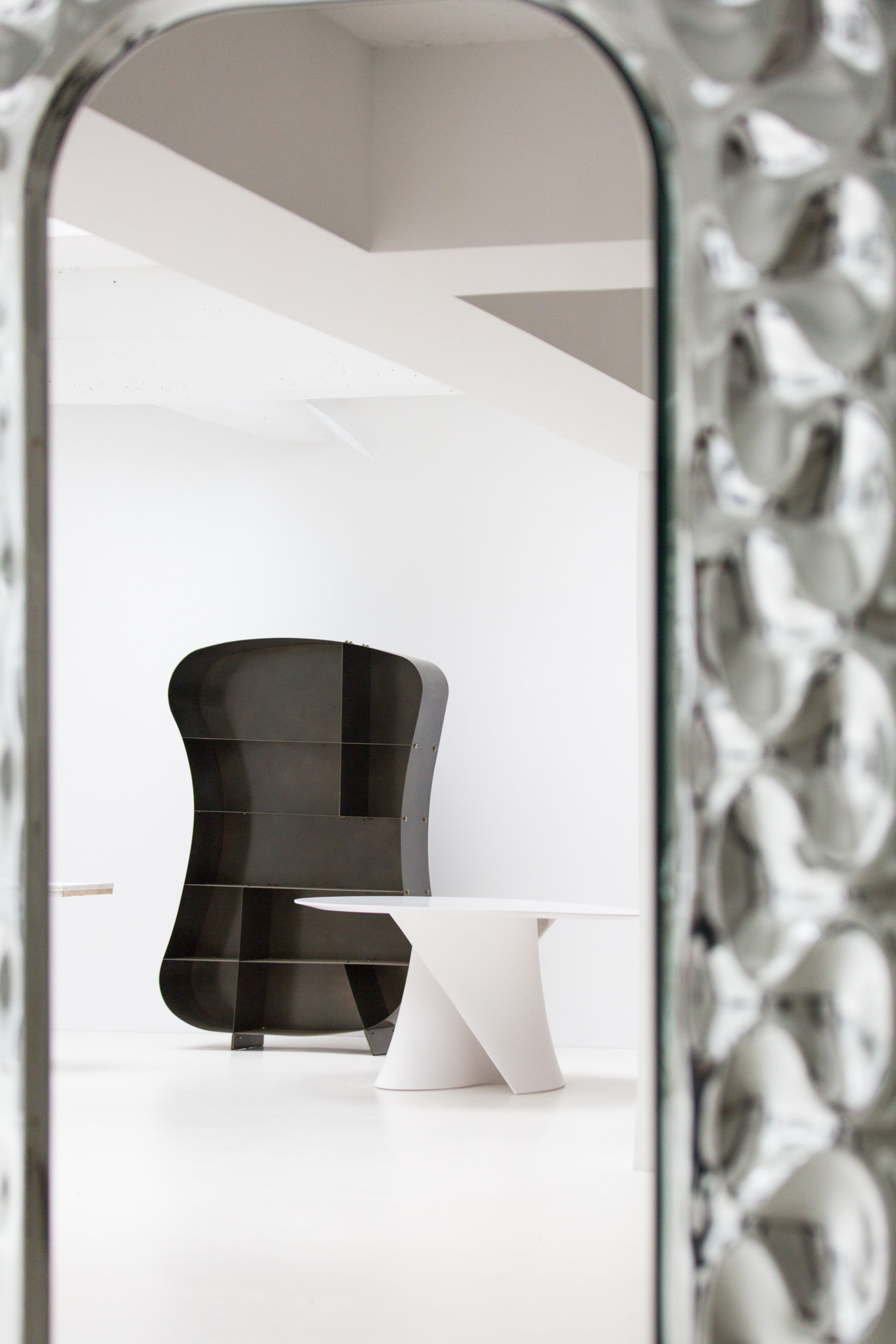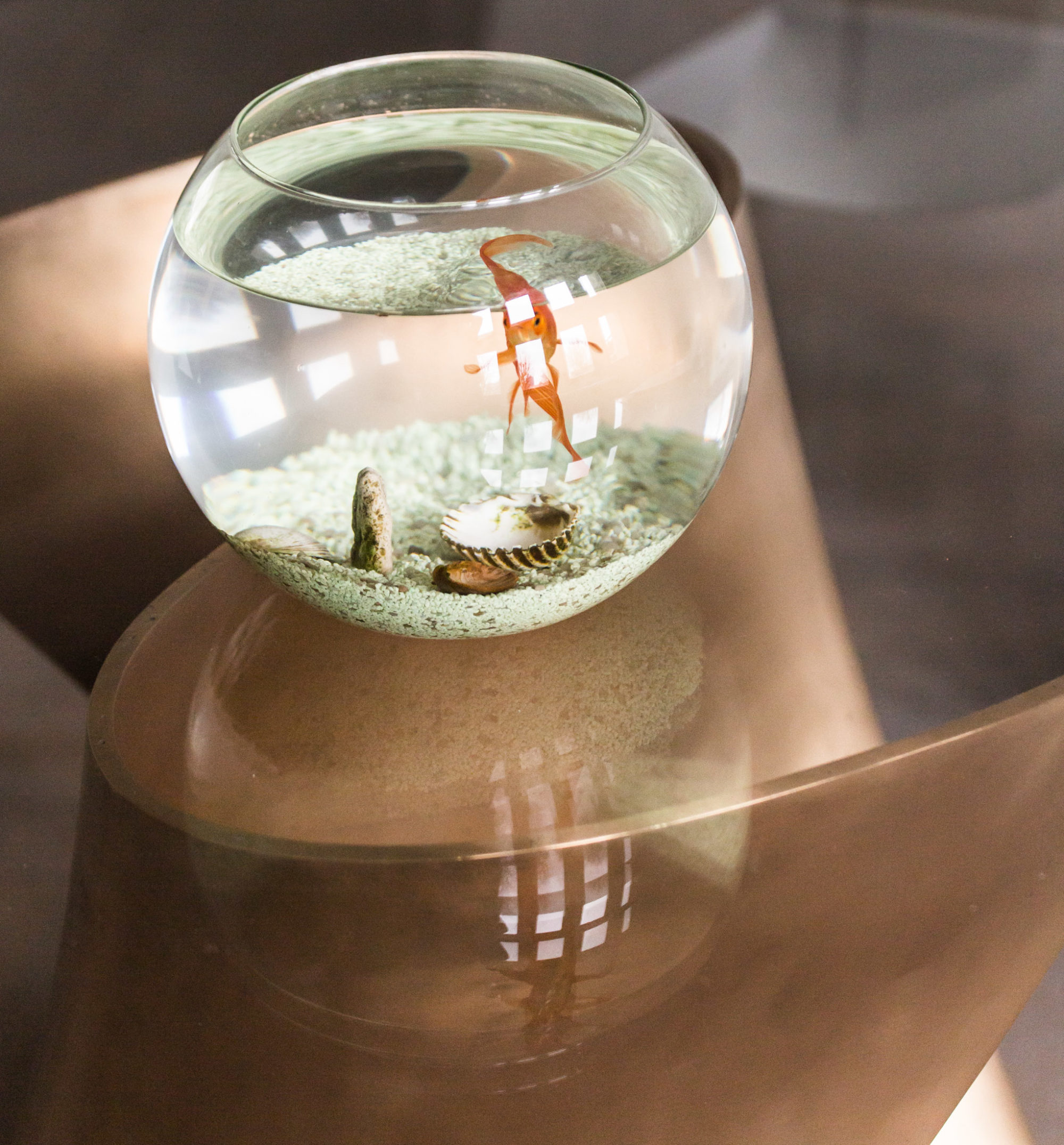When Xavier Lust discusses his work, there’s one piece he keeps returning to: his Le Banc bench. Born from a single sheet of metal and folded, it forms a sculpted seat of gentle ebbs and curves.
The aluminum prototype, displayed in Milan in 2000, caught the attention of MDF Italia, leading to a long relationship with the brand and work with other companies including Driade, De Padova, and Fiam. In 2006, Lust’s home city of Brussels installed the benches in public areas. They were fast covered in graffiti, which inspired the designer to create a version pitted with holes and devoid of flat surfaces that paint would need to cling to. The prototype Gun Metal bench ended up in a Paris gallery, paving the way for limited-edition commissions and collaborations with leading galleries in London, Paris, and Milan.
Now, in the 47-year-old Lust’s first gallery exhibition in the United States, taking place at Ralph Pucci in New York from May 22 through September, the bench will be displayed alongside five other pieces. In this iteration, called the Oxyd Metal bench, the pierced steel has been allowed to rust to a specific point before being lacquered, a touch that reflects Lust’s ethos of allowing his materials to create their own forms. “I didn’t design the shape of the bench with a computer—it really came out of the material through natural deformation,” Lust says. “The shapes generated by this process have become my reference, language, and signature.”
It was with metal that Lust, who studied interior design and opened his studio in 1992, found himself most able to recreate the aesthetics of nature. Working with factories in Belgium, he developed techniques to bend metal into angles not previously seen in furniture design, with steel, brass, and aluminum taking on light, curvaceous forms that seem incongruous with their media. “With very little material, a disc machine, and a welding machine, you can do so many things,” Lust says. “You don’t need molds. The natural folding of the material gives it shape.”
At the Ralph Pucci exhibition, the burnished brass Oudjat—a genre-defying console-and-seat combination made of a single, continuous flow of metal—best represents the evolution of Lust’s signature style. The sculptural cast bronze S table showcases his sometimes-dizzying experiments, as does the Meuble d’Appui, a polished cabinet with curved doors.
The exhibition also charts Lust’s move away from his traditional medium of metal, with his Tavolino Travertino side tables in enigmatic shapes carved from travertine stone. “My work is very coherent, but I’m not closed in,” he says. “I feel easy in all technologies, all modes of production and materials.”




